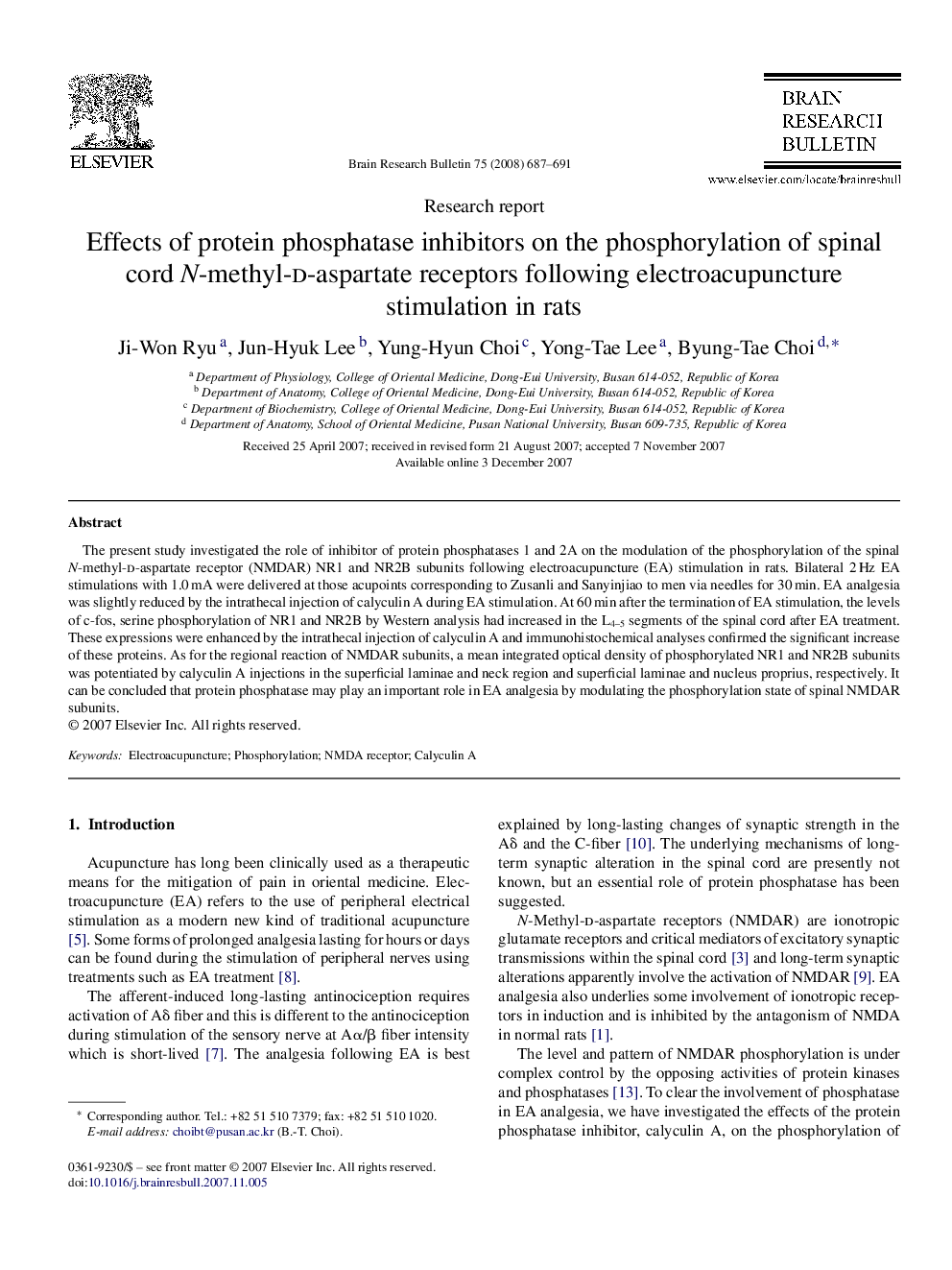| Article ID | Journal | Published Year | Pages | File Type |
|---|---|---|---|---|
| 4320003 | Brain Research Bulletin | 2008 | 5 Pages |
The present study investigated the role of inhibitor of protein phosphatases 1 and 2A on the modulation of the phosphorylation of the spinal N-methyl-d-aspartate receptor (NMDAR) NR1 and NR2B subunits following electroacupuncture (EA) stimulation in rats. Bilateral 2 Hz EA stimulations with 1.0 mA were delivered at those acupoints corresponding to Zusanli and Sanyinjiao to men via needles for 30 min. EA analgesia was slightly reduced by the intrathecal injection of calyculin A during EA stimulation. At 60 min after the termination of EA stimulation, the levels of c-fos, serine phosphorylation of NR1 and NR2B by Western analysis had increased in the L4–5 segments of the spinal cord after EA treatment. These expressions were enhanced by the intrathecal injection of calyculin A and immunohistochemical analyses confirmed the significant increase of these proteins. As for the regional reaction of NMDAR subunits, a mean integrated optical density of phosphorylated NR1 and NR2B subunits was potentiated by calyculin A injections in the superficial laminae and neck region and superficial laminae and nucleus proprius, respectively. It can be concluded that protein phosphatase may play an important role in EA analgesia by modulating the phosphorylation state of spinal NMDAR subunits.
